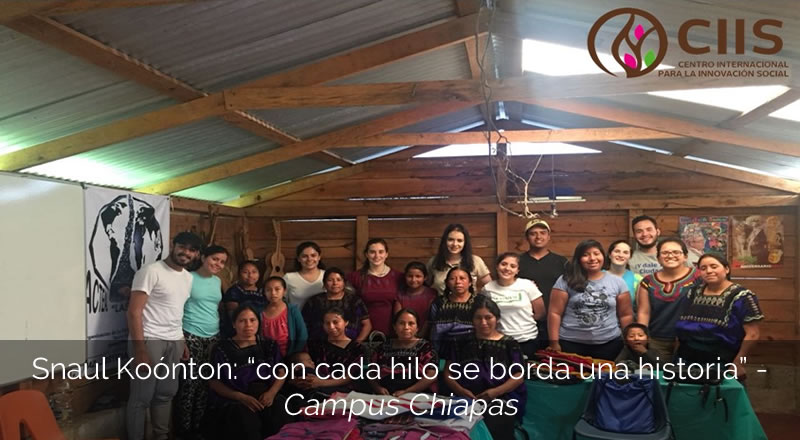
Context
Chenalhó is the municipality where members of the Tzotzil women’s artisan group, Snaul Koónton, have come together in a joint effort to generate more revenues for themselves and their families, as well as to publicize the culture and traditions of their people through the creation and sale of their textile craftwork. With the support of Tec de Monterrey, the cooperative seeks to propose and introduce commercial alternatives to their business project based on a solidarity economy, in order to dignify the artisans’ work by fomenting the improvement of their quality of life.
Challenge(s)
Students were set the following challenges:
- Setting fair prices.
- Creation of an identity as a cooperative.
- Proposal of points of sale.
- Standardization the products’ measurements or sizes.
- Group organization.
- Improvement of products and services.
- Teaching the artisans the fundamentals of using a computer.
- Creation of an account on Mercado Libre for online sales.
- Teaching the artisans how to use Facebook.
- Updating the Facebook page and creation of sales and advertising content.
Outcomes
The outcomes of the intervention were:
- Proposal of a new logo and sales cards.
- Standardization of product sizes.
- Proposal of points of sale.
- Proposal for the creation of an inventory.
- Proposal for service and product improvement: clip.
- Creation of an instruction manual for using the computer.
- Basic course in using the computer.
- Training in the use of a Mercado Libre account.
- Training in the use of Facebook.
- Production of a tutorial video on the use of Facebook.
Sustainable Development Goal(s)
The SDGs linked to the challenge are:
- 4-Quality education.
- 5-Gender equality.
- 8-Decent work and economic growth.
- 10-Reduced inequalities.
- 12-Responsible production and consumption.
Education partner organization
The bridge between the actors of the block and society was:
Maya Vinic.
Population
The sector of the population impacted was:
Textile artisans from Chenalhó.
Artisans’ families.
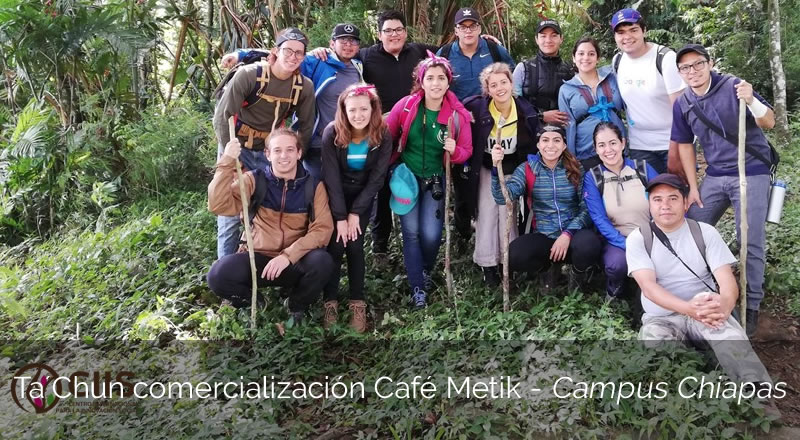
Ta´Chun Metik Coffee merchandising
Context
The state of Chiapas has diverse needs associated with the different sectors that require proposals to solve their main problems. Their design should take into consideration aspects such as environmental protection, finance and social issues. One place in particular is the Nuevo Paraíso Community in the municipality of La Concordia, Chiapas, three hours away from the capital Tuxtla Gutiérrez. The main activities in Nuevo Paraíso are the production and marketing of organic coffee, adventure ecotourism, coffee tasting, the production of coffee plants, and the operation of a small restaurant that serves local food. Once some obstacles in the community had been overcome, the participants decided to explore other areas that could have a share in trading products. The decision was made to update the concept of the Metik Organic Coffee business idea, whose main value proposal is that the coffee should be harvested, produced and marketed exclusively by single or married women or widows who would like to generate an income for their family, since they support their children who are studying or have to put food on the table on a daily basis.
Challenge(s)
Students were set the following challenges:
- Implement a comprehensive agroecological farm.
- Ecotourism route in the principal coffee regions.
- Search for new Metik coffee distribution channels.
- Hiking focused on getting to know the buffer zone in the El Triunfo Biosphere Reserve.
- Mapping the community and strategic ecotourism route points.
Outcomes
The outcomes of the intervention were:
- Achievement of 13% management in gold green coffee sales for non-local customers.
- Acquisition of a map with signs for the community and its main active zones for adventure ecotourism.
- Creation of a comprehensive agroecological farm.
- The board of directors proposed the creation of a produce and meat product store.
- Obtaining raw material for organic fertilizers.
- Increase in marketing toasted ground organic coffee.
Sustainable Development Goal(s)
The SDGs linked to the challenge are:
- 2: End hunger, achieve food security and improved nutrition and promote sustainable agriculture.
- 5: Achieve gender equality and empower all women and girls.
- 12: Ensure sustainable consumption and production patterns.
Education partner organization
The bridge between the actors of the block and society was:
Puerta a la Montaña (PAM)
Population
The sector of the population impacted was:
Nuevo Paraíso community, La Concordia municipality, Chiapas.
Families in Puerta a la Montaña.
Learn more
The following images (PDF file) show some examples of the activities that students carried out in conjunction with the educational partner organization and the inhabitants of the different communities.
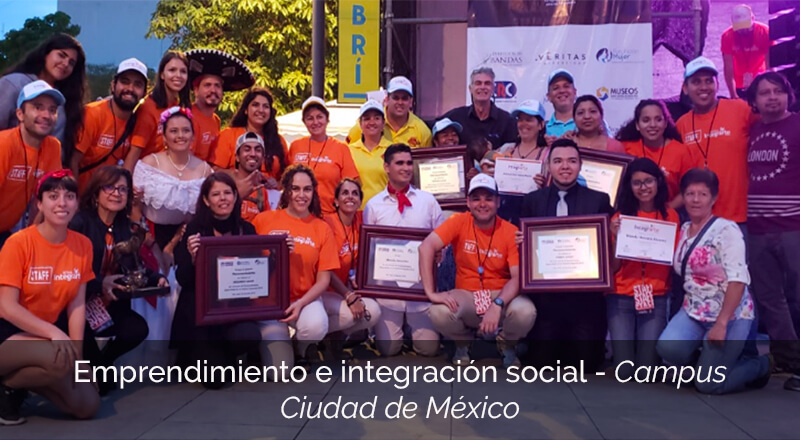
Challenge
Co-design and test an entrepreneurship process that is suitable for the person’s capacities, using a lean entrepreneurship methodology, based on full knowledge of the social, economic and political reality and circumstances of individuals who are applicants or refugees in Costa Rica.
Intervention outcomes
- The students, organized in teams, participated (per team) in up to four entrepreneurial undertakings, in stages:
- Knowledge of the context and empathy
- Identification and validation of opportunities
- Participation in a competition for seed capital
- The students’ involvement with the entrepreneurs was profound, since they carried out fieldwork to learn about work practices and specific environments.
- Many of the solutions contributed by the students were innovations for practices in the entrepreneurial undertakings, in diverse aspects: product design, production, distribution and market.
- They also collaborated as staff in a cultural event “Experience Integration”, organized by the United Nations High Commissioner for Refugees (UNHCR) on June 23 and 24.
- All the entrepreneurial undertakings (23 in all) benefited in some way from the students’ work, through innovations in their practices.
- The entrepreneurs competed for seed capital, with four winners who renewed the perspective of their businesses
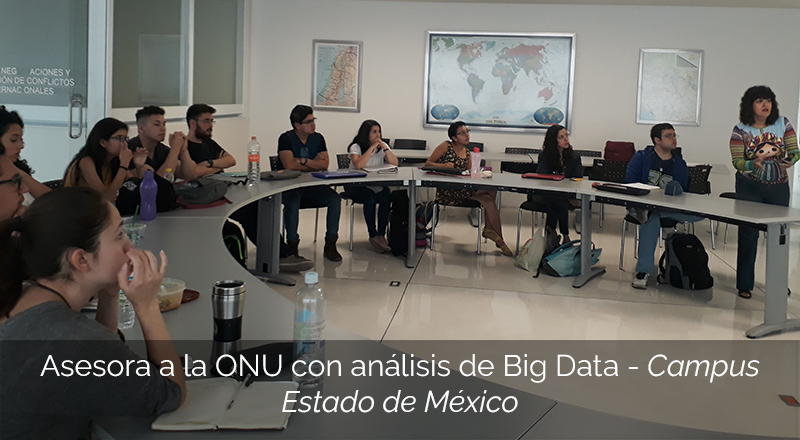
Context
The United Nations Information Center approached Tecnológico de Monterrey with the aim of initiating a collaboration to combine efforts on the topic of the 17 Sustainable Development Goals. The UNIC did not have a communication strategy that would impact its target audience, young people in Latin America. The Center understood that social networks were the main source of information of this audience and that they are the future with regard to actions and, therefore, they should be targeted to raise awareness of and generate a culture about the 17 SDGs.
Challenge(s)
Students were set the following challenges:
- Suggest communication strategies aimed at young people in Latin America in order to generate awareness of Human Rights.
- These strategies will be implemented on social networks, based on a culture of protection and peace.
Outcomes
The outcomes of the intervention were:
- Set of strategies in a document called: UNIC Communication Strategies 2018.
- A specific strategy was proposed to address the needs of each social network.
- Facebook appearance of diversified, precise content to integrate a greater number and variety of groups.
- Twitter precisions on the characteristic of the types of messages with the most interaction.
- YouTube make two areas of the network more attractive and dynamic: content and agenda.
- Design a content agenda that contains the most important days for UNIC and the UN, so users can distinguish communications aimed at them.
- Generate personalized communication that invites users to reflect and act: questions, answers and reactions aimed at each one of them.
Sustainable Development Goal(s)
The SDGs linked to the challenge are:
- 4 Quality education.
- 9 Industry, innovation and infrastructure.
- Education partner organization
The bridge between the actors of the block and society was:
UNIC
Giancarlo Summa, Director of the United Nations Information Center for Mexico, Cuba and the Dominican Republic: giarncarlo.summa@un.org
Mariana Castro, UNIC Strategic Communication Director: mariana.castro@un.org
Population
The sector of the population impacted was:
Young people 19 to 30 years old in Latin America who look for information on social networks.
Learn more
The following images (PDF file) show some examples of the activities that students carried out in conjunction with the educational partner organization and the inhabitants of the different communities.
Proposal to use visual tools to disseminate the philosophy of the cooperative.
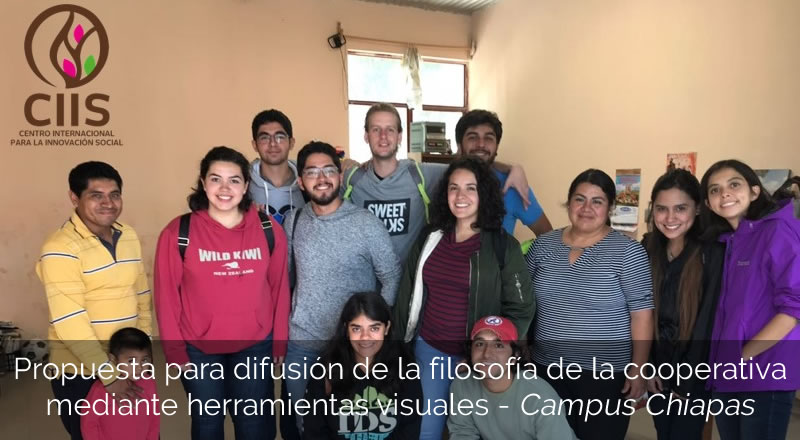
Contexto
Se busca con este proyecto apoyar a la cooperativa en la difusión de su filosofía y cultura, así como sus proyectos sobre formación humanitaria y ecológica, producción orgánica y sustentable de café y miel, y el ecoturismo. Buscando que más familias de las comunidades puedan convencerse y sumarse al proyecto y adopten las prácticas de la cooperativa teniendo un mayor alcance y logrando un beneficio colectivo impactando de manera positiva en la vida de las familias que participan en las actividades que se realizan en la zona, y de esta forma construir un hogar sustentable para todos los involucrados.
Context
The aim of this project is to support the cooperative in communicating its philosophy and culture, and projects on humanitarian and environmental education, organic and sustainable coffee and honey production, ecotourism. In this way, more families from the communities will come to believe in and join the project, adopting the cooperative’s practices to expand their scope and achieve a collective benefit with a positive impact on the lives of the families who participate in activities held in the region, thereby building a sustainable home for everyone involved.
Challenge(s)
Students were set the following challenges:
- Expose clearly and in detail the philosophy of Los Lagos de Colores, its most important archeological projects and history through the design of a plan for an informative video that can be created and disseminated by a deadline chosen by the education partner.
- Facilitate the recognition of projects in the agroecological center through the design of signs.
- Create a comprehensive publicity plan for Los Lagos de Colores, aimed at potential tourists who are interested in agrotourism projects.
Outcomes
The outcomes of the intervention were:
- Signs for the agroecological center.
- Informative pamphlet on coffee planting, honey production, agroecological center, agrotourism, cabins, biodigester, dry baths and edible fungi.
- Plan for the promotional and informative videos.
- Customer satisfaction survey for the tourism package.
Sustainable Development Goal(s)
The SDGs linked to the challenge are:
- 1. No poverty.
- 2. Zero hunger.
- 3. Health and well-being.
- 5. Gender equality.
- 12. Responsible production and consumption.
- 15. Life on land.
- 17. Partnerships for the goals.
Education partner organization
The bridge between the actors of the block and society was:
Lagos de Colores Cooperative.
Population
The sector of the population impacted was:
Members of the cooperative and their families (women homemakers, farmers, young people, children).
Learn more
The following images (PDF file) show some examples of the activities that students carried out in conjunction with the educational partner organization and the inhabitants of the different communities.